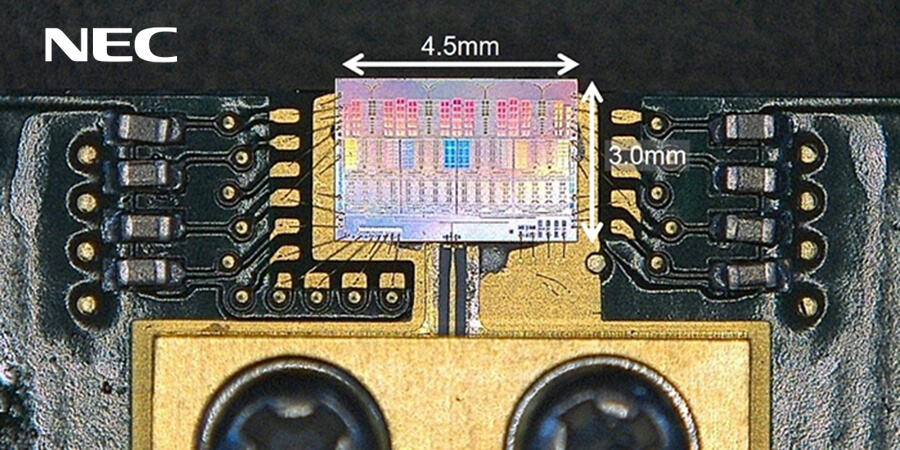NEC Corporation has developed a 150 GHz transmitter IC chip and supporting technologies in preparation for Beyond 5G and 6G mobile access radio communication systems.
According to an NEC survey, this is the first demonstration of preferred beam steering performance with 4-channel Antenna-on-Chip (AoC) IC technology using On the Air (OTA) radiation pattern measurement.
Based on innovative RF circuit design technology, it has become possible to integrate 150 GHz phased array antenna elements, phase shifters and transmission amplifiers into a single chip. The 22-nm SOI-CMOS technology used for manufacturing this IC is cost-effective, suitable for mass production, and has the ability to support large-scale integration of digital, analog and RF functionalities in a chip. This allows for both higher frequencies and smaller sizes, which also contributes to a lower Total Cost of Ownership (TCO) and potentially accelerates social implementation.
Beyond 5G and 6G systems are expected to provide 100 Gbps-class broadband communications that are more than ten times faster than 5G. To achieve this, it is effective to utilize the sub-terahertz band (100 GHz to 300 GHz), which can secure a wide bandwidth of 10 GHz or more. In particular, the D-band (130 GHz to 174.8 GHz), which is already assigned for fixed wireless communication systems worldwide, is expected to contribute to early social implementation.
However, since the sub-terahertz band is subject to large propagation losses, large interconnection losses and device performance is nearing its limit, there is a need for the development of highly directional, high-gain antenna technology and its beam steering technology. To overcome these challenges, NEC developed a new IC chip that supports the 150 GHz band.
Going forward, NEC will continue to develop advanced technologies with the aim of contributing to the commercialization of 6G, which is expected in the 2030s.










